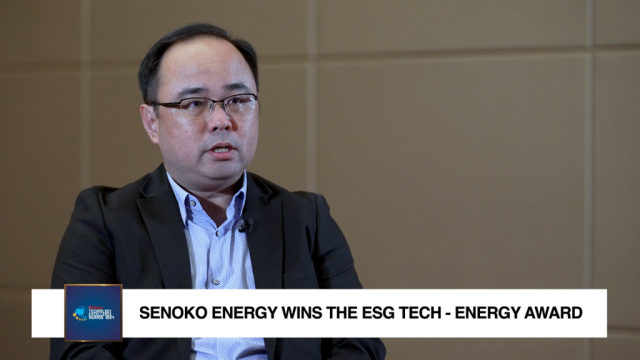Greening Asia’s supply chains
By Shawn Chen
In a world where consumers have gotten used to a global marketplace where goods can be ordered from thousands of miles away, supply chains have proven themselves vital to the economy.
Favourable factors such as technological advancements and continuous improvement to provide latest facilities have made Southeast Asia an attractive location for logistics-intensive industries such as manufacturing, but also create substantial environmental burden in the region.
On that note, while consumers enjoy the convenience of having everything from groceries to clothes delivered to their door, they are increasingly expressing a preference for companies that are transparent about their environmental impact.
With as much as 80% of the world’s total carbon emissions produced from global supply chains, it’s clear that companies will need to move towards greening their networks to keep up with evolving consumer needs.
The benefits of having sustainable supply chains go further than just cost savings – it is also about stronger partnership opportunities and brand reputation. Investing in sustainability is an ongoing process, and can be reviewed regularly to help align strategies with goals. Here are some pointers to keep in mind at any stage of the sustainability journey:
Short-term targets, long-term goals
For organisations that have yet to embark on this journey, it can be intimidating if decision-makers are unsure of where to start. Government plans, such as Singapore’s net-zero carbon emissions by 2050, can be a good place to start identifying overall long-term strategies.
Instead of seeing such goals as seemingly impossible, businesses can set short term targets that are more achievable for employees, and easier for the boardroom to review and make necessary changes when needed.
For example, businesses can look at smaller targets such as reducing carbon emissions on a quarterly basis first, rather than annual reductions that are difficult to track. Having a variety of targets, from quantitative to qualitative monthly targets, can also help companies match the pace of change that is required.
A food manufacturing organisation can aim to reduce single-use packaging by 20 per cent monthly, whereas a company in the technology industry can have quarterly staff training on the importance of sustainability goals. It is better to start somewhere than not start at all, as these baby steps can help build confidence with customers and partners, and improve the organisation’s sustainability strategy in the long run.
Harnessing the power of data for a 360 view
Critical information can be a company’s greatest asset when it comes to achieving sustainability goals. The severity of disruptions arising from the ongoing climate crisis, and disruptive weather events may be hard to predict, but it is possible to forecast and take necessary measures ahead of time. For example, above-normal rainfall is predicted for much of the southern ASEAN region in the next two months.
When ships are forced to make last-minute detours, companies may face fines due to higher carbon footprints and emissions. Using data retrieved from visibility platforms can help organisations to decrease emissions by managing detoured shipping routes and adapting to disruptions in real-time.
Adopting analytics technology can result in a bounty of data which can provide insights to evaluate supplier performance quarterly or annually. These tools also allow organisations to conduct qualitative climate scenario analysis for the operations, providing a more holistic view of the network while supporting the transition to a low-carbon supply chain. With this knowledge, decision-makers can have more informed conversations with stakeholders and the ability to address any potential red flags in a timely manner.
Transparent conversations for collaborative partnerships
Solving sustainability challenges is not a one-man nor a one-organisation job, but also falls on the shoulders of stakeholders along with the network. Taking a longer-term point of view toward sustainable supply chains, decision-makers need to rethink their entire network – from materials to manufacturing, to packaging and have transparent conversations with their stakeholders regularly.
Moreover, business leaders cannot rush into replacing partners or vendors, simply because their sustainability goals are not aligned at this point. It can be even more challenging for large multinationals as it can be difficult to coordinate change with many stakeholders without careful planning. Rather, insights-driven performance can allow decision-makers to have transparent and persuasive conversations with under-achieving partners and help them address challenges.
Green supply chains for a better tomorrow
Efficient supply chains are smart for business and the environment. By taking steps to reduce supply chain waste and work towards more sustainable partnerships, companies can increase efficiency, uncover cost savings opportunities, and decrease emissions. The supply chain industry is at a turning point where business leaders are embarking on their sustainability journey, but these small steps will go a long way in addressing the world’s greatest environmental issues.

























 Advertise
Advertise










